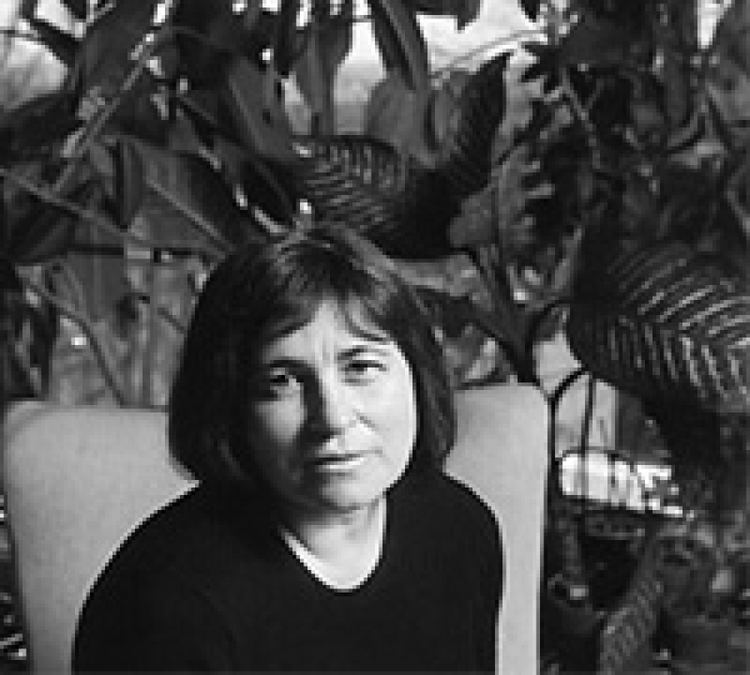Died 25 November 2005 | ||
 | ||
Ghitta Caiserman-Roth (March 2, 1923 – November 25, 2005) was a Canadian artist. She was a founder of the Montreal Artist School and has work in the National Gallery of Canada. Caiserman Roth was also a member of the Royal Canadian Academy (RCA) and the first artist to receive the Governor General Award.
Contents
Biography
Ghitta Caiserman-Roth was born in Montreal, Quebec in 1923. Her parents were Sarah Wittal, an owner of a children's wear company and Hannaniah Meir Caiserman, a civic leader in the Montreal Jewish community and union activist. Both parents were heavily involved in socialist causes which had a significant impact on Ghitta's art; she was also influenced by her experiences working in war factories in Montréal and Halifax. By young adulthood much of her art was influenced by her experiences working in war factories in Montréal and Halifax, her work embraced the working class life and explored socialist themes.
Caiserman-Roth attended the Parsons School of Design in New York from 1939 to 1943. She studied at the École des Beaux Arts in Montreal in 1961 to 1962. She returned to Montréal in 1947, with Alfred Pinsky she opened the Montréal Artists School.They opened the school with artists Barbara Eckhart and Harold Goodwin. Many of the students were war veterans and Caiserman-Roth served as principal. The school however only lasted until 1952 and was sold. A trip to Mexico in 1948 exposed her to the socialist mural movement, and she began incorporating mural forms into her work, once again exploring socialist themes. She studied with Moses Soyer at the American Artists School of the Art Student League of New York. Caiserman-Roth studied political murals as they explored Mexico bringing fresh idea’s back to the McGill Ghetto where they lived until 1956.
Influence
Caiserman - Roth’s father ran a salon out of their family home in Montreal and this was where her earliest influences began. There artists and writers would gather to discuss social and political change. Her father, Hanane Caiserman reviewed art exhibitions and exposed her to many Montreal artist and writers. One of the most memorable to Caiserman-Roth was “Yud-Yud” Segal who introduced her to Marcel Proust and Romain Rolland. Not only was she heavily influenced by literature but by the painter Louis Muhlstock. After his return from artistic study in France. They would take many walks together and she learned the difference between “seeing” and merely “looking at”. Muhlstock was incredibly sensitive to his environment and this had a large influence on Caiserman. Later on she attribute her free-range imagination and varying degrees of abstractionism to Muhlstock. Her early childhood experiences play heavily into the relationships depicted in her paintings, especially between mother and child. Her mother Sarah Caiserman, expressed her love of art by designing clothing for her children. Caiserman-Roth recalls sitting in piles of her mother's fabric enchanted by the colours, textures and patterns. This experience was heavily drawn upon when she painted First Steps (1956), depicting her own daughter. Her first and formal influence was her art teacher Alexandre Bercovitch, who taught her through private lesson at her family home in Montreal in 1932. He was the epitome of bohemian and she recalls his “bulging blue eyes” with fondness. He heavily inspired her work with pastels and she was deeply moved by his dedication to the craft. Bercovitch also had an incredibly fondness for New York City, the city that Caiserman-Roth aspired to move to.
Movement
Ghitta Caiserman-Roth was part of Jewish Painters of Montreal. The group was an artist collective that depicted expressionistic images of social realism during the 1930’s and 40’s. Modern Canadian painting was defined by this generation that drew its inspiration from rise of socialism, the great depression and the effects of war. The painters were heavily influenced by the social effects of fascism and the struggle of the working class. The style was later referred to as Social Realism; a term popularized in the 1980’s by art historian Esther Trepanier. Caiserman-Roth was part of the, the Young Women's Hebrew Association, (YWHA) along with other female artists Rita Briansky and Sylvia Ary and it was from this group that the Jewish Painters were born.
Exhibitions
Awards
Caiserman-Roth won numerous awards:
